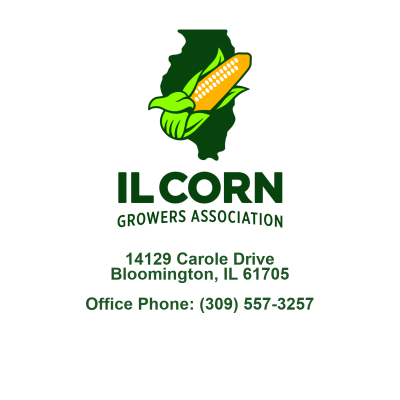Statement on Illinois Nutrient Loss Reduction Strategy

Water quality and nutrient loss reduction continue to be priority issues for the Illinois Corn Growers Association (IL Corn). The recent release of Illinois Nutrient Loss Reduction Strategy Biennial Report highlights both the challenges and accomplishments we have observed over the last two years. IL Corn has committed 9 staff and over $3 million dollars over the past two years in effort to increase conservation agriculture research and the number of on-farm programs. In 2020 alone, the Precision Conservation Management Program (PCM) was able to help farmers realize a reduction of over 615,000 pounds of nitrogen and over 90,000 pounds of phosphorus.
This recent NLRS report includes the 2019 season which speaks to one of the challenges we face when trying to create a plan for success given normal conditions. 2019 was far from normal. In fact, it was in the top four wettest springs of the state’s history and had 6 consecutive months of above average rainfall. As our new normal includes more intense and frequent rainfall events we need to also continue to adapt our strategy and practices to best address nutrient loss.
IL Corn has worked with partners to expand the PCM program helping farmers see the financial impacts of conservation practices on their farms. We continue investing in research to further understand why nutrient loss is occurring in priority watersheds, promoting cover crops on new and expanding acres, offering nitrate testing opportunities for members, and developing new crop insurance endorsements focusing on actuarially sound conservation practices.
While we work on policy and programs to provide tools to Illinois farmers, we realize barriers still exist. Private partnerships have been created to try and overcome the lack of technical assistance and state-level funding currently available. Farmers also need practices to make economic sense when considering making changes to management with the upfront costs of these practices being cost prohibitive. Illinois is like many other mid-west states with non-operating landowners accounting for a high percentage of land ownership. Farmers need to know if they make these investments, they will continue to have access to the land under their care and landowners need to see the value and risk mitigation these practices bring.
Illinois Corn Growers Association president, Randy DeSutter, expressed the organizations commitment to the NLRS and said, “we will continue to work with other commodity groups, conservation organizations and industry to address the goals of the NLRS and help create a pathway for Illinois farmers to be successful. We should celebrate our wins but own the challenges we still face in meeting not only the interim but long-term goals of a 45% reduction in load of total phosphorus and nitrogen.”
Contact Megan Dwyer, Nutrient Loss Reduction Manager, for more information at (309) 557-3257.











































































































